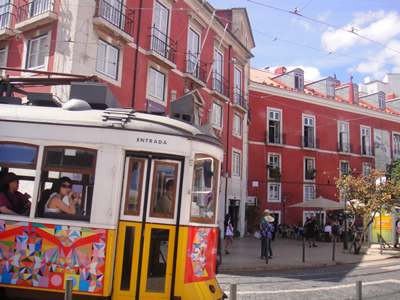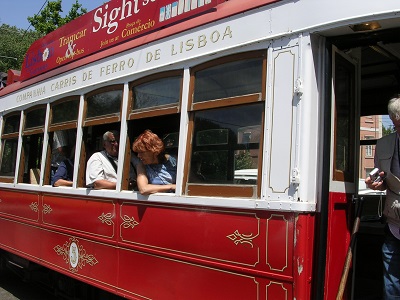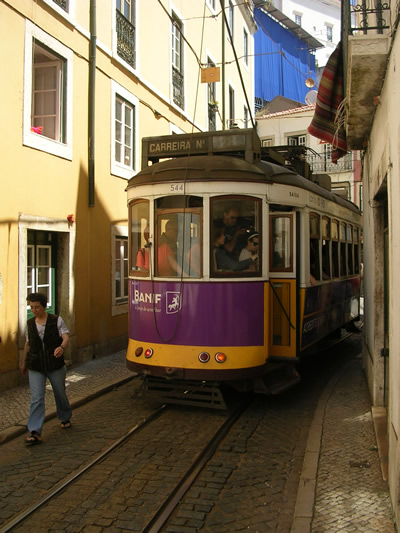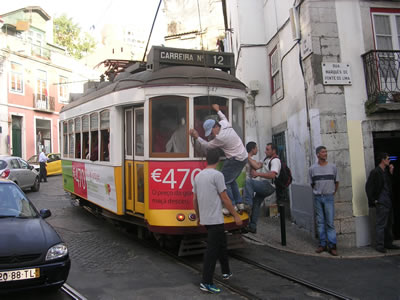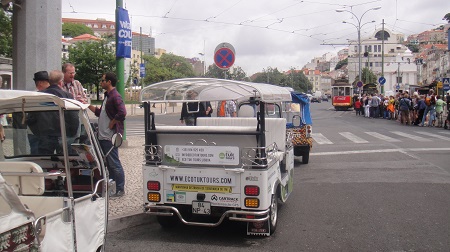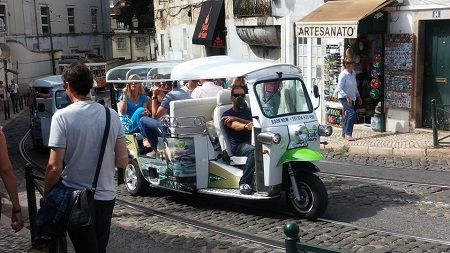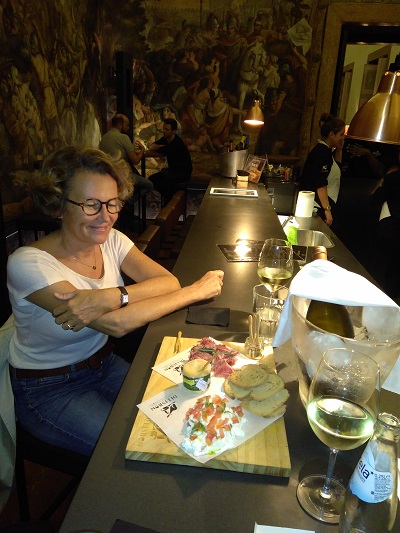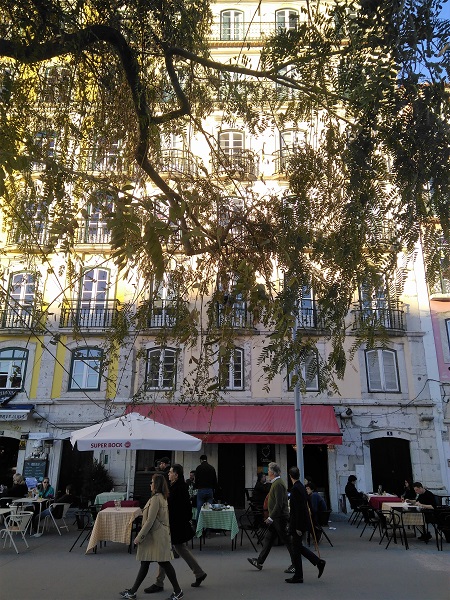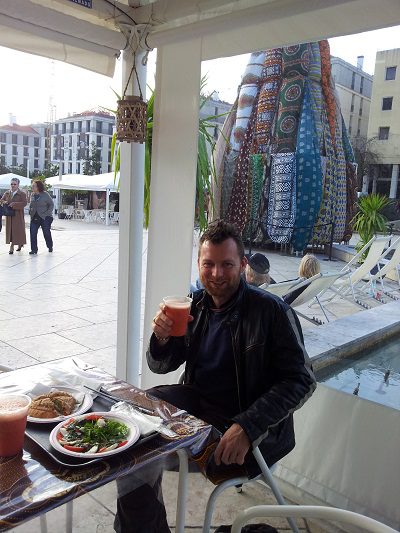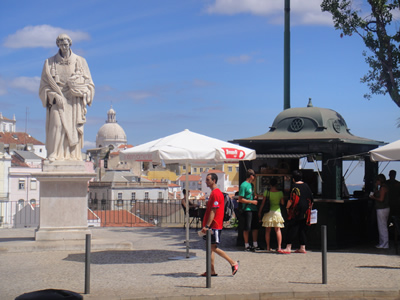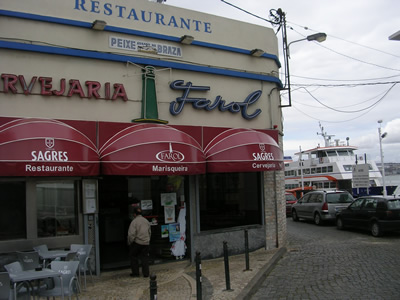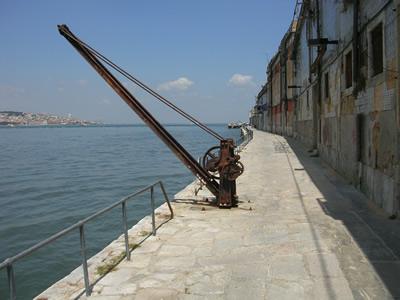The National Palace in Queluz is one of Lisbon’s top tourist attractions, easy to reach by train from Lisbon or from Sintra. From outside the palace looks romantic, but what happened behind these walls when the Portuguese royal family lived here, about 200 years ago?
National Palace in Queluz Lisbon district & wonderful French-styled garden
History of Portugal & exorbitant decorated rooms in Rococo style
While walking around in the many exorbitant decorated rooms of the National Palace in Queluz (Palácio in Portuguese , you realize that a ‘one afternoon’ visit is too short. Each room represents a piece of history of Portugal, as well as of Brazil.
Information in English is quite basic, unfortunately. In case you don’t like a group tour guide: there’s real good info at f.i. Wikipedia.
National Palace in Queluz & Robillion staircase: ingeniously designed steps adorned with statuary
Discovery of Brazilian gold & the wealth of Portuguese colonies
Queluz’s Palace architecture is representative of the final extravagant period of Portuguese culture that followed the discovery of Brazilian gold in 1690.
The National Palace in Queluz & YouTube video: an impression
Brazil was a Portuguese colony from 1500 till 1822; nowadays the Portuguese is still the language of the majority of people in Brazil.
National Palace in Queluz & one of the 2 sphynxes dressed in 18th-century costume
Foreign artists, architects & newly enriched aristocracy
From the beginning of the 18th century many foreign artists and architects were employed in Portugal to satisfy the needs of the newly enriched aristocracy; they brought with them classical ideas of architecture which derived from the Renaissance.
In its design, Queluz is a revolt against the earlier, heavier, Italian-influenced Baroque whi
National Palace in Queluz district Lisbon, the ballroom & tourists , June 2017
Royal residence from 1794 – 1807 & Queen Maria I : a very sad story
Dom Pedro III started the construction of the Palácio de Queluz in 1747. He married his 17 years younger niece D. Maria, Princess of Brazil, (1734-1816) in 1760. The couple had a happy marriage and they got six children.
But queen Maria suffered from religious mania and melancholia. This acute mental illness (perhaps due to porphyria) made her incapable of handling state affairs after 1792.
National Palace in Queluz district Lisbon & “Sala de Mangas” (Japonese drawings) decorated with tile panels (azulejos) illustrating the wealth of Portugal’s colonies
1794: Ajuda Palace destroyed by fire & smallpox
When the palace of Ajuda burnt down in 1794, the court was forced to move to the Queluz Palace, where the ill queen Maria would lie in her apartments all day. Visitors would complain of terrible screams that would echo throughout the palace. Her condition worsened after the death of her husband and the deaths from smallpox of her elder son and her daughter and their infant son. Maria died in Rio de Janeiro, aged 82. More……
National Palace in Queluz district Lisbon & one of the excessive decorated rooms
The juicy story about Queen Carlota Joaquina (‘the fury’ of Queluz)
–
Doña Carlota Joaquina of Spain (Carlota Joaquina de Borbón y Borbón-Parma). Picture: Wikipedia
Marriage Joaquina Carlota with corpulent João (John) VI & the miracle of nine handsome children
Joaquina’s husband was good-natured, indolent, corpulent and almost as ugly as she was. His religious observances bored her, and they were quite incompatible. Nevertheless, she gave birth to nine children and, because they were all handsome, it was rumoured that especially the younger ones had a different father.
National Palace in Queluz district Lisbon & the empire bedroom
Sexual orgies
After the birth of the ninth child the couple began to live separate lives. It was rumoured that Joaquina had bought a retreat where she indulged in sexual orgies. Source: Vortex magazine, WikiPedia
Movie trailer YouTube (English spoken) Carlota Joaquina Princesa do Brazil
Several Movies and TV series have been made about Carlota Joaquina‘s life. She had a bad reputation: infidel, manipulative and nymphomaniac. Carlota was religious, faced men and also transgressed the social norms of the time, which caused her to have many conflicts, also with the Portuguese authorities.
National Palace in Queluz district Lisbon & “Sala de Mangas” decorated with beautiful tile panels
Napoleon Bonaparte & transfer of the Portuguese court to Brazil in 1807
Anticipating the invasion of Napoleon’s army, Joaquina’s husband João VI ordered the transfer of the Portuguese royal court to Brazil before he could be deposed.
Carlota Joaquina fought until the last minute not to leave for Brazil, asked for help from her parents, but diplomatic agreements made it difficult for Spanish kings to participate in Portuguese affairs.
National Palace in Queluz district Lisbon & entrance restaurant June 2017
Carlota Joaquina & caipirinha, Brazilian’s famous cocktail
Caipirinha is the national drink in Brasil and also very popular in Portugal. It is said that Carlota Joaquina invented the drink when she lived in Brazil, mixing her beloved Cachaça liquor (a spirit distilled from fermented sugarcane juice) with fruit and sugar. Supposedly, she drank incredible quantities of the liquor, and the palace had to order dozens of bottles for her each month.
Delicious! 🙂 😉 Caipirinha Recipe (and video)
Ingredients of the caipirinha. Picture: Wikipedia
‘Secret Histories of Portuguese kings’
“The nymphomaniac wife of King João VI, Carlota Joaquina, will have been the ‘inventor of caipirinha“, according to writer and journalist Alexandre Borges. Book: ‘Histórias Secretas de Reis Portugueses’ (‘Secret Histories of Portuguese Kings’), in a new edition.
As the Napoleon wars ended, Carlota returned with the king and the family to Portugal in 1821. She died at the Queluz Palace in 1830 at the age of 54. It is speculated whether she died because of natural causes or whether she, in fact, killed herself.
National Palace in Queluz Lisbon district
On the assassination Carlos I in 1908, the palace passed into the ownership of the state. Portugal was in the turmoil of revolution and the monarchy fell two years later. Since 1940 it has been open to the public as a museum.
Prices, opening times & how to get to the Palace in Queluz from Lisbon
- Location: Largo do Palácio, Queluz, Portugal
- Open everyday, except main public holidays, from 10.00 a.m. to 5.00 p.m. my experience: during luchtime (12:00 – 14:00) there are not many visitors
- Palace and Gardens 5 €, Gardens 3.5 € (over 65 yrs.) 10 € adult. More info
- Train: Lisbon-Sintra line, get off at Queluz/Belas (ca. 1 km walk to the Palace, easy to find)
National Palace in Queluz Lisbon district















